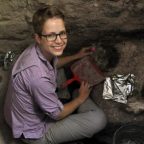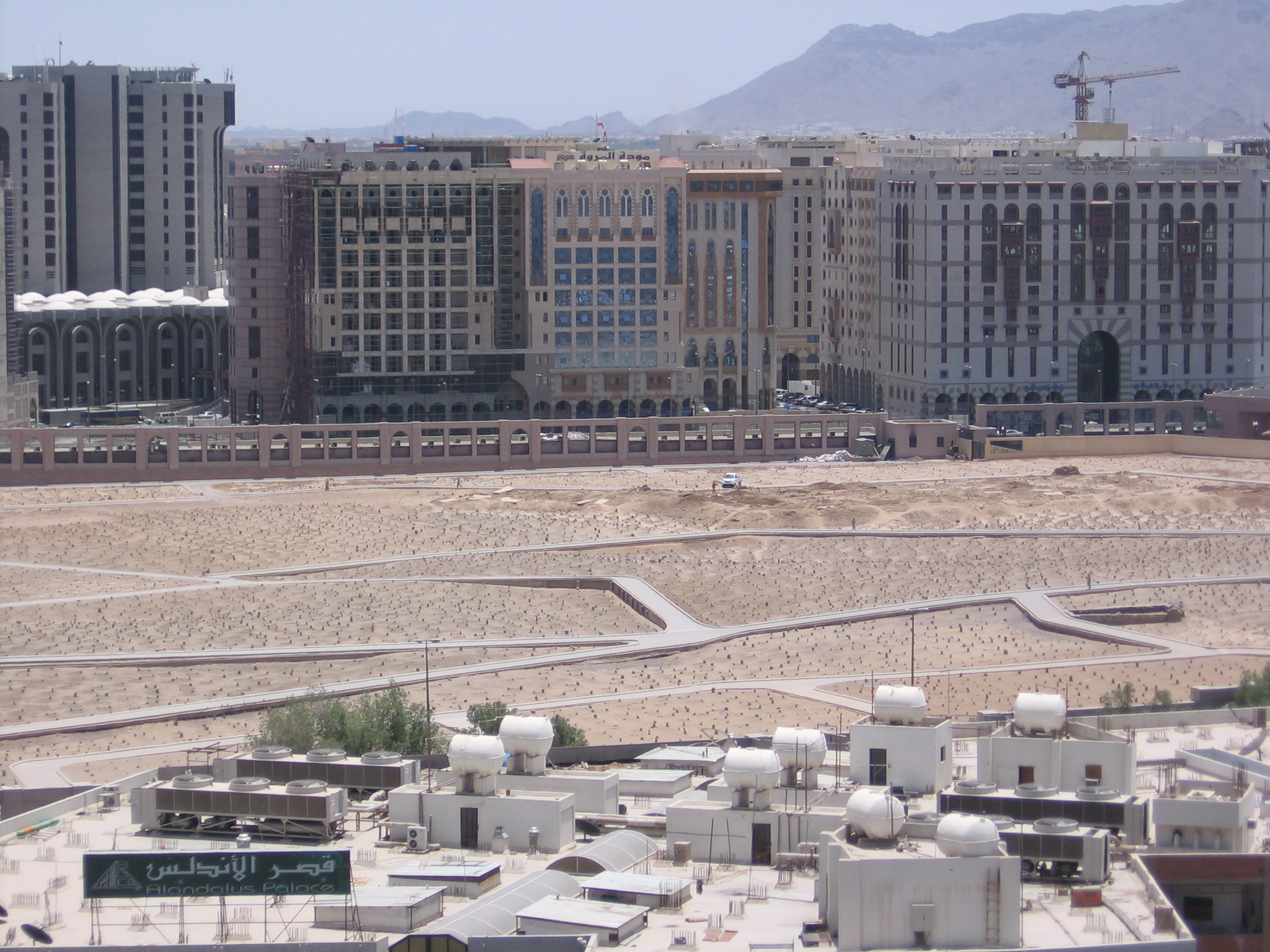Straight from the headlines: ISIS destroys the temple of Bal at Palmyra. Looters steal friezes from Greco-Roman sites in Ukraine under the cover of conflict. A highway is built through an ancient Mayan city in the Guatemalan highlands, the legacy of decades of near-genocidal internal conflict. Why is the loss of human patrimony important, especially in the context of the loss of lives? How can we begin to explain why both are worthy of our consideration? And what can high school or college educators and their students do about it? Our first roundtable features three experts from the University of Texas who’ve taken the destruction of sites where they’ve worked and lived seriously, and are working to raise awareness of the importance of antiquities in danger around the world, and share simple steps to raise awareness about the problem and how to get involved.
Guests
 Stephennie MulderAssociate Professor of Islamic Art and Architecture at the University of Texas at Austin
Stephennie MulderAssociate Professor of Islamic Art and Architecture at the University of Texas at Austin David StuartDavid and Linda Schele Professor of Mesoamerican Art and Writing at the University of Texas at Austin
David StuartDavid and Linda Schele Professor of Mesoamerican Art and Writing at the University of Texas at Austin Debora TreinLecturer in Anthropology at the University of Washington
Debora TreinLecturer in Anthropology at the University of Washington
Hosts
 Christopher RosePostdoctoral Fellow, Institute for Historical Studies, The University of Texas at Austin
Christopher RosePostdoctoral Fellow, Institute for Historical Studies, The University of Texas at Austin

Our topic today is antiquities in danger, or as UNESCO puts it, cultural Heritage destruction. This is probably a broad question, I think a lot of people are probably familiar with things like the world heritage project, National parks, things that are supposedly protected. So, how much danger are antiquities in, for what reasons, and why?
David: well, I think there are multiple dangers out there. It’s true that there are protections on the law books, and ostensibly protections out there in the various nation-states for antiquities. But, the reality is that the laws can’t always protect archaeological sites, nor the objects themselves being taken out of the ground. There are so many layers to this story, and so many layers to the challenges that everyone faces in the material, which is daunting. There are wars, of course, that are very much in the news today in various parts of the world. Even in places, though, where there is relative stability economically and politically, the antiquities are under threat.
Stephennie: yes, I think that’s true. Certainly, we could have stronger legislation, and there are various initiatives underway. There’s a major one in Germany right now that’s being put through, and right now in our own Congress, there is legislation—HR 1493—that has passed the house and is now going on to the Senate to prevent the import of antiquities from Syria during the current conflict. There’re already moratoriums on the import of antiquities from Iraq that have been in place since the 2003 Iraq invasion. But, despite these kinds of import restrictions, we’ve seen antiquities imports from Iraq go up—in some cases the estimates are between about 300 and 1000%. So, it’s clear that these types of restrictions are not entirely effective, But that doesn’t mean it’s not important to put them in place. They do, in fact, enable different parts of government to coordinate with one another in order to ensure the enforcement actually takes place. So the real key, I think, is enforcement. Enforcement on the ground in conflict zones, obviously, it is very challenging thing to do––impossible, really, I would think. But in places that are not in conflict, that’s actually something that I think actually can be addressed a little bit more directly.
Chris: Debra, do you want to add something?
Debra: yes, I think to touch on the actions and types of risks that cultural heritage is under right now, in addition to war. Some of the other things that impact cultural heritage fair and negatively include neglect, where the local population is not invested in maintaining or saving a particular archaeological site or archaeological materials. There is also intentional destruction. I’ve been through warfare or some other sort of destruction like, for instance, the Buddhas of Bamiyan that were destroyed by the Taliban because they were not Muslim. They were not part of the hegemonic culture. And then looting. One of the biggest problems we have right now is people stealing things from archaeological sites, defacing archaeological material to sell them for profit.
Chris: which raises the question–we were mentioning enforcement. To what degree is corruption under the officials and turning a blind eye another issue we have to be aware of?
Stephennie: it’s certainly an issue in places where I’ve worked. It depends.
Debra: it’s impossible to quantify, though.
David: it’s one of those things, like you say, you can’t quantify it and it’s ubiquitous, it’s everywhere. It’s embroiled in every other kind of nefarious activity you might be able to think of inside these places. I know for a fact, It’s not just isolated where I work in Guatemala and Mexico, But the antiquities trade is very much one dimensional of a much larger network with narco trafficking and everything else. It’s very hard to separate out these tendrils in the black market.
Stephennie: It’s one part of a larger criminal activity, criminal networks.
Debra: Wherever you have money, You’re bound to have that sort of activity happening. Corruption period
Chris: to what extent does ideologically driven conflict – the Buddhas of Bamian came up earlier, Debra mentioned them – I know, Stephanie we’ve discussed what ISIS is doing in Syria in a previous context – To what extent does that drive some of this destruction? What can we do about people who believe that they are actually in the right to destroy these antiquities?
Stephennie: oh, what can we do about it? I’m not sure we can do much about that aspect. It’s an interesting question, and I think it’s one that really deserves some more rigorous academic study. We take the case of ISIS right now in Syria, which is of course is very much in the newspaper: people have seen these videos going around of them destroying Nineveh and other sites. This is a situation where you have a group that is, on the one hand, they’re claiming that these things are idolatrous, right? They take their inspiration from some traditions of Wahhabism and Salafism within Islam that claims that any type of imagery is a threat to Muslims and others, and so they destroy sites like this because they claim that they are real religious threats for people. That people might be tempted to worship them in place of God. So, on the one hand Isis is claiming this, and on the other hand, they’re also looting archaeological sites of the very same types of objects, And selling them on the black market, and profiting from them. So, there’s a relative level of hypocrisy—if they’re truly of pure hearts and minds religiously, certainly you certainly wouldn’t see those two activities coexisting. There’re a pretty isolated case, I would say, within most of the Islamic world.

The only other place where I’ve seen that type of destruction happening is, of course, with the Taliban in Afghanistan to some degree. But, the place were really see that happening to a profound level is in Saudi Arabia itself. By some estimates the Saudi government has destroyed 95% of their heritage since 1985. And, in that case of course they’re also destroying Islamic monuments and Islamic sites. The most famous is that one of the prophet Mohammed’s wives, her home was turned into a block of toilets. There is an ideological motivation is to wipe out anything that might possibly tempt Muslims to worship anything other than God. Most of the world’s Muslims have very happily coexisted with sites like this, with monuments like this, have worshiped at saints shrines where holy people have been—this is been part of Islamic tradition from the get-go. It’s a really richly integrated parts of Islamic life, so this is a very strong aberration from most of Islamic history. We only see this starting to arise, this kind of fervor, in the 18th century.
Chris: Speaking of coexistence between people with monuments, I know that in Mesoamerica where these sites are being looted—again mostly for sale and financing of other illegal activities—people have been living with these things for thousands of years. How does this go over with the local population?
David: Well, it’s surprising. I’ve seen it on many levels when working in the field in Mexico and in Guatemala, Honduras. You have a lot of different kinds of communities, a lot of different people living among the ruins descendants of the ancient people themselves, modern-day Maya for example, Growing corn at the base of ruined pyramids in the countryside. You have Ladinos who don’t claim any indigenous heritage, who are also right there. You’d be surprised how disconnected even the Maya of today are from their heritage. We recognize these kinds of connections, historically, linguistically, ethnically. But there, where education sometimes doesn’t even exist, they have no recognition that these antiquities are are their own inheritance, that they are the descendants of the populations that built them.
Debra: yeah, I completely agree with you. From my experience working in Mesoamerica, the local governments tend to have a really good sort of conservation management plan in place, but more or less they seem to be lacking a coherent strategy. The local population being divorced from their own heritage. This is a symptom of how they are not to allowed to manage their own heritage site. They’re in the hands of other people.

David: that’s absolutely true. I think that governments often will claim that heritage as sort of a nation-state, the national legacy of Mexico, or the legacy of Guatemala, and the legacy of these communities are disconnected from that completely. So, the looting is coming from various sources and this is what makes it so complex. You have locals who might be mining a pyramid for building supplies, that happens also all the time. You have roads that are being built now throughout many of these areas. Again, using the very handy masonry pyramids as the source for the road stones. It’s happening as we speak. There’s no control over this just because of the quantity of the material. The nation of Mexico, the nation of Guatemala, no country– The United States included– cannot with the resources that are allocated manage their cultural heritage. We have so many sites in the United States that are being destroyed right and left, especially in the western part of the country. It may not be because there is ignorance on anyone’s part– that’s part of it I guess–but there’s just so much out there. There’s bound to be a level of destruction that no one can really control, and that’s really the sad part.
Stephennie: But I would just add that people are hitting on something that’s really key here, which is that education is really important. Most people, I think, really need to try to think a little bit about why heritage matters. It’s not something that immediately probably comes to mind for most people. Why should you care? There are different answers to that, and they’re not all unproblematic. There’s UNESCO’s vision of world heritage, and of course national uses of heritage have often been problematic as well. I think it’s important to look critically at some of those, too. What we can address as educators is to really come up with a good answer to that simple question: why should we care? Why should people care about heritage? Why should people care about antiquities? Because it’s not necessarily inherent to that kind of a response. I think it’s something that people have to think about a little bit especially in the context of the kinds of warfare that i see in the regions where I’ve worked in Iraq and Syria, that question is very puzzling for people when human lives are at stake. Why should we care about cultural heritage?
I guess I’ve set myself up to answer that question…
[Laughter]
I’ll take a stab at it! It’s a complicated question to answer, But I think that we should care first and foremost because this kind of of material culture does tell us who we are in some sense. So, we can think of that in a global sense. Material cultural explains who we are in a way that textual sources, for example, can’t. On the other hand, a lot of times archives are included within the context of cultural heritage as well, so that framework really tells us who we are, Literally in the case of Mesoamerican monuments. These types of buildings explain the past to us. I think an understanding of the past is certainly something that most people can start to really wrap their heads around, even on the most basic level.
David: this opens up so many concerns. Heritage is something that is—to use an academic term, it’s very multi vocalic. There are lots of heritages out there. We’ve just had a big debate in this country about the symbolism of the Confederate flag, right? And the claims of Heritage inherent in that. I think as archaeologists and art historians and historians we’re really reaching deep here with antiquities. Education is really key to make people connect with the ancient past. This is something that I think in the United States is really hard to do. In Europe I think there’s more of a sensitivity to its, but in the US, we have a short memory (and there’s a historical basis for that). We have to really go the extra mile in our education at the university level, in high school, and even earlier to connect people with this past. I think that’s a huge challenge, and I think we really have to think more about that. We have to operate on an international scale. In each country, and each region they have their own challenges.
Stephennie: there’s this really great quote from Michael Crichton, and I’m going to paraphrase it. If you don’t know history, you don’t know anything. You are a leaf, that doesn’t know that you are part of a tree. It really kind of encapsulates why I think all of us need to know that we are part of this tree, and cultural heritage place a really pivotal role. It’s very different to actually encounter an object or a building or a space. It’s a profoundly different, aesthetic, emotionally than simply reading about history in a book. I think anyone who’s enter it into a cathedral or seen a Maya pyramid or walk into a mosque has have that kind of experience.
Debra: to build on that, I like to think of heritage as landmarks for memories. They are truly cultural manifestations, material manifestations of peoples’ identities. One way for to bring it down to people in North America for instance is to use that we have here, like the Alamo, or the Constitution, or the Declaration of Independence. It’s not just that they exist, but that they are also seeds for the American identity, or the Texan identity, or the Canadian identity. For them to disappear, to be destroyed is to lose that material manifestation of that identity, and it’s not surprising that landmarks like that, or objects like that are often targeted in war.
Chris: that’s a good point.
Stephanie: there’s something abstract about this, it’s difficult to wrap your head around. I think you’re absolutely right, Debra, that bringing in a concrete example is a really great way for people to think about it. When we talk about the Elgin marbles for example, in my art history survey, we always say, “Okay so what? They’re in the British Museum. It’s great, the whole world can see them. Why should the Greeks care? They should be happy, more people are seeing them.” But then, I turn the question around and ask them, “Well, how would you feel if the torch of the Statue of Liberty was in China, and the crown of the Statue of Liberty was in the British Museum, and part of her cloak was in another place?” and they’ll look really shocked because imagining that monument, which is a beloved symbol of our highest ideals in this country chopped up and shipped around the world really brings that home in this visceral way. So I think it is really key to bring in concrete examples that people do identify with, that our seeds, as you say, of our own memory, of their own identity when we are talking about about this. I think that opens up that space for empathy for others and how they would have those similar types of reactions and attachments.
Debra: Another good contemporary example is the Nazi campaign in London where they were trying to bomb St. Paul’s Cathedral. The story goes that they were trying to bomb it not because it was a strategic target, but because it was a symbol for London, and once that symbol was gone it would be easier to subdue the English population. That speaks to the power of heritage within any type of society.
Chris: A lot of our listeners are students– High school students, college students– people who are not necessarily professional historians, but have a keen interest in history. For somebody who is concerned – recognizes the value, but is concerned—what practical steps can one take? Particularly when we are talking about ruins or buried artifacts in the Syrian deserts or the Las Vegasization of Mecca– And by the way I would just add for any listeners who haven’t seen that, you should Google current images of Mecca because they really do look like Las Vegas – or for the pyramids of Mesoamerica and the royal tombs of the Maya. They’re far away, they’re not necessarily tangible if you haven’t been there. What can one do to take action, raise awareness?
Stephanie: well, one thing you could do is join our group UT Antiquities Action!
[Laughter]
We started a group on campus last fall that really is meant to embrace anyone in the community—faculty, student, staff—but also that the broader Austin community. Anyone who is interested is welcome to join us. We meet once a month, usually on the last Wednesday of the month. If you’d like to stay updated you can join our Facebook page. We have a pretty active Facebook page and anyone is welcome to post. And we carry out actions. We went this spring to the office of representative Michael McCall, to encourage him to vote for HR 1493. That was successful. We’d like to think that we played a tiny, tiny, perhaps microscopic role in that decision! But that was a great thing to do.
We have a whole bunch of other things planned as well for the fall including possibly a conference, and we have a poster campaign, a number of other things that we’re doing. So, anyone in the community is welcome to do to join if you’d like to get involved in Austin.
There’s another really great group called SAFE– Saving Antiquities For Everyone. There’re a terrific group that’s actually designed for exactly this purpose, to educate laypeople or perhaps those who don’t have a background in archaeology, art history or antiquities or cultural heritage. UNESCO has a really great campaign right now for young people called #Unite4Heritage. That’s a hashtag that you’ll see quite a lot. It’s not only for young people, but it’s targeted at a younger audience. Anyone of course can use that. So, those are a few simple social media based things things.
Debra: One wait to get involved is to contact your local state historical commission as well. THC, for example in Texas, has a lot of ways to get involved, to volunteer at their historic places, also even hang out in their excavations. Those are great opportunities to get educated as well as to help out with your local historical commission to help protect your local cultural and archaeological heritage.
Another suggestion is to travel, and travel responsibly. So, learn about the ways in which you can benefit local populations when your doing cultural travel, when you’re going around visiting archaeological sites. The more people who support local communities in responsible cultural tourism, The more engage they will be in the stewardship of their archaeological and historical heritage.
David: it’s really hard for me to add to those wonderful suggestions. I would just generally say that for people who are listening who maybe in high school, Who are a bit younger than we are to engage with this whole dialogue about the cultural preservation on many levels. I think we need much younger blood in this effort to really educate, to spread the word, in ways that we were just talking about. School groups, any kind of organization–social media has been mentioned– it’s really the young people who can makes a difference. There are so many ways to do this, It’s impossible to go into them all.
But it’s about education, it’s about knowing what’s going on on the ground, knowing about the destruction that’s taking place, knowing the art market to some degree, and that things for sale that might be in an art gallery somewhere in Houston or Dallas and questioning some of these things, questioning where they came from. Don’t just assume that’s the way things are, or the way they should be– it’s really an area where people can come together and make a real difference.
Debra: I would add to that that if anybody has questions, please contact us. Sometimes it is hard for us to reach out, getting contact with everybody who wants answers. If high school students or anybody out there has questions, please feel free to shoot us an email. We’re here and sometimes it is hard for us to climb down from the ivory tower and connect with everybody.
Chris: Is this a good time for me to add that we have 70,000 subscribers to this podcast?
[Laughter]
It is a great idea, because I think this is one of those areas where we can actually connect. The state historical society is or even amateur historians—I think everybody has a vested interest in this. I remember living in DC when they were proposing to build a Disney theme park right next to the Manassas Battlefield. You remember this? People got up in arms about it. Because of the historical significance of the site, so it really isn’t just an us/them thing– we have this going on right here too.